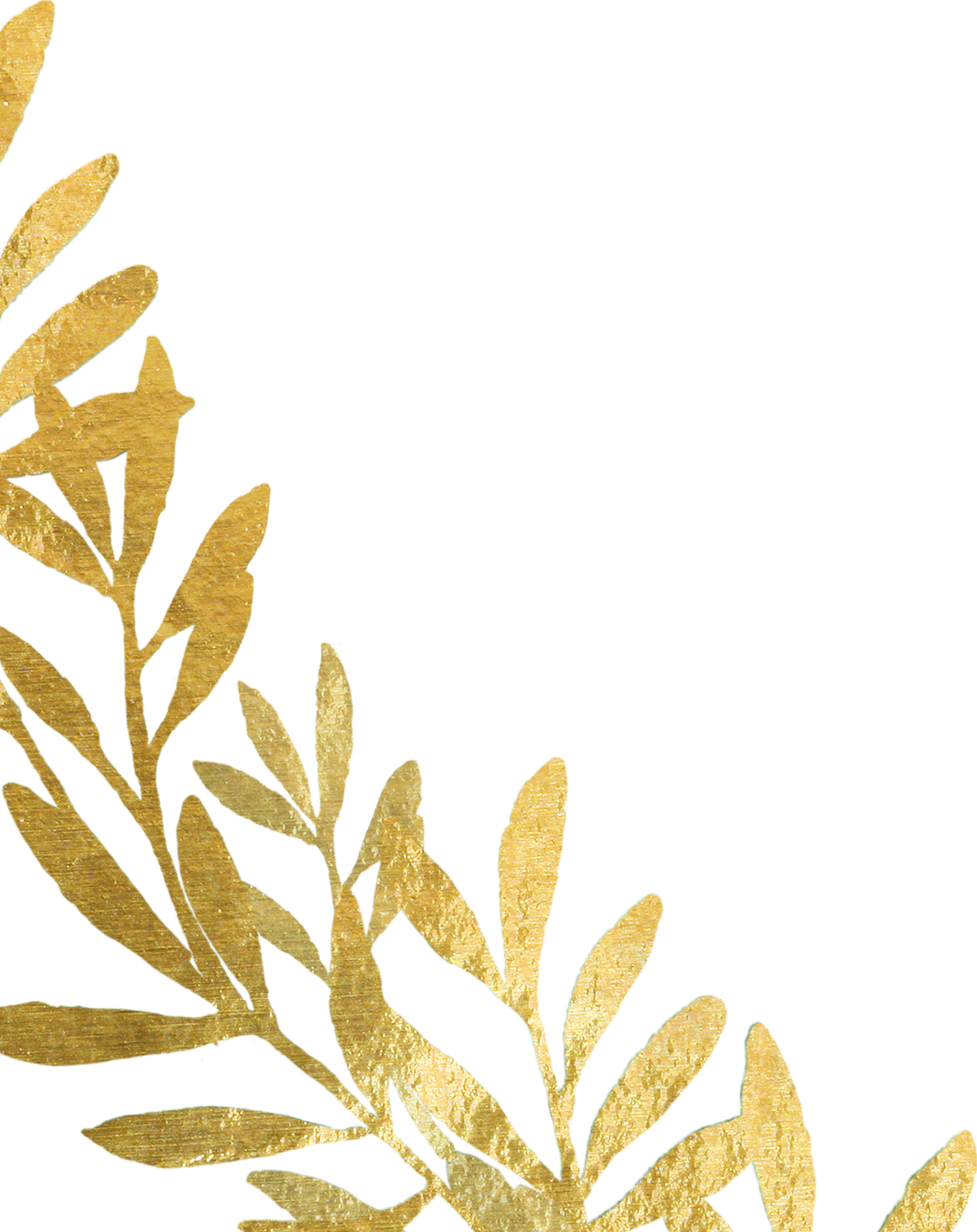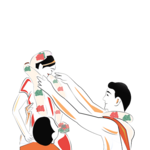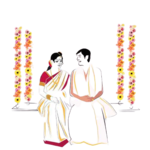Srividhya & Matthew


The Ceremony Guide
Part 1: South Indian Traditions

Welcoming the Groom
Vanakkam in Tamil means welcome. The wedding starts with the brides's family welcoming the grooms’s family to the wedding hall. The grooms's family enters the wedding venue, the bride's family welcomes the groom's family with hard candy and sweets.

Kashi Yatra: Going on a Pilgrimage
According to the tradition, the groom pretends like he is leaving to Kashi (considered one of the most scared cities in India) to become a Sanyasi (a monk) where he will dedicate his life to practicing religion. The groom traditionally carries a bamboo fan, an umbrella, a walking stick and a scroll. Wearing new slippers the groom pretends to start his trek to Kashi and leaves the wedding hall. The bride’s father then follows him and convinces him not to go. He asks the groom to envision a bright future with his daughter, where they will build a life together. Then the groom will agree to return to the wedding. According to Hinduism, mankind has 4 ashrams (stages) in life. Brahmacharya (the student), Grihastha (the family man), Vanaprastha (the retiree) and Sannyasa (the renunciate). The Kashi Yatra ritual represents the transition from the Brahmacharya stage to the Grihastha stage.

Maalai Matral: Exchanging Garlands
The Maalai Maatral is a fun competition between the bride and groom. In ancient times, it signified that the bride has chosen the groom as the man she'd like to marry. In this tradition, the bride and groom's close family and friends lift the bride and groom on their shoulders, bringing them face to face. The bride and the groom wear flower garlands on their necks. The groom takes off one garland from his neck and tries to place the garland on the bride. The bride then tries to do the same. The bride and the groom both try to avoid getting garlanded by the other. This is repeated three times.

Oonjal: Swing
Oonjal is a swing that is beautifully decorated with flowers and ornaments. The bride and the groom are led to the oonjal and sit together. The swing is then gently rocked back and forth; while relatives and friends sing songs to the bride and groom. Then, the couple is given a mixture with milk and bananas to eat. The women of both families symbolically wash the couple’s feet with milk and wave colored rice balls around them. They throw the balls in four directions to fend off evil spirits. The rocking motion of the swing symbolizes to the couple that they must stay strong during turbulent times and challenges of life. The ritual also signifies the support of family and friends throughout the couple's life together.
Part 2: Vedic Ceremony
Additional information to come.